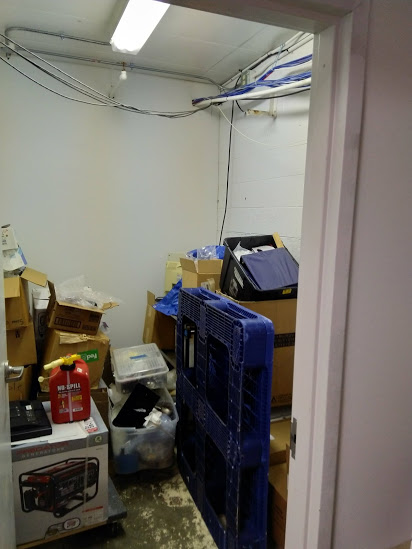Hey everybody! I wanted to give the community an update on on the production space experiment we’re running here in Ann Arbor. From the initial post responses, it looks like a lot of folks were interested in how this would go, and I wanted to share some front-line progress. I plan on breaking this down a bit as some insight into the hiring process, our initial goals and progress (and lack thereof), and where we hope to see this go from here.
Initially, I heard about the position from a friend with some mutual networking contacts. I don’t have really any relevant professional experience to be a perfect fit for the position, but the more I thought about it, the more my hobbyist background would get me through the technical parts of the job, and my professional experience was going to fit more in terms of the “In a perfect world you would also…” section of the posting. Greg mentioned to me in my first few days here that someone else told him how hard these type of positions are to hire for, and I can definitely see how that would be. For folks venturing out into the world bringing on a new production person, I think I’d advise breaking down your needs vs wants into as few basic requirements as possible and try to just have some open conversations with some potential applicants to see who’s out there that you might not expect. The job definitely requires attention to detail on the hardware end, but the bigger challenges of this position are going to be more related to the ongoing formalization of the production space alongside the existing lab operation, I think. There’s already a great team in place here, any my challenge is to build without interfering as much as possible.
In our first week, we had some pretty manageable targets to hit in terms of production that we missed, mostly due to a lack of some initial supplies (I’m writing this as we print out a batch of case bits). Through this, Greg has been a great teacher and I’m constantly learning. We switched focus to me getting our 3d printers running 100% and developing a procedure for onboarding new projects, starting with an exploration of the OpenFlexure project. There has been an abundance of great ideas for what comes next (most of which I’m just tucking into a bookmark folder for later), but seeing the thought and care that’s already been put into our-sci’s reflectometers, software, and testing procedures is mind-blowing. Before bringing someone on board, try to have as much of your existing documentation and procedures written down and organized as possible, so they have something to read through while you go about the rest of your normal routine. New hires can be incredibly needy and time-consuming pets.
Talks with Ryan have also been going great, but DropBot production is also hanging on some supply issues (thanks Chinese New Year and coronavirus!). This has actually been a blessing in disguise, as it is giving us the opportunity to focus on where and how the actual production space can be arranged. On this note, before bringing someone onboard, evaluate your space. Current production, lab, office, and storage space will all change as production expands. If you can, take a mental inventory of what needs to be where it currently is and what can go. Doing this in advance will help you get your operation up and running on day one.
Our storage space, after the first car load of excess boxes was removed.Anyway, I’m looking forward to sharing more progress as we go along, and hopefully giving y’all additional insight into what we’re learning as we do it.
Hope you’re doing well, and let me know if there’s anything you’re curious about!
